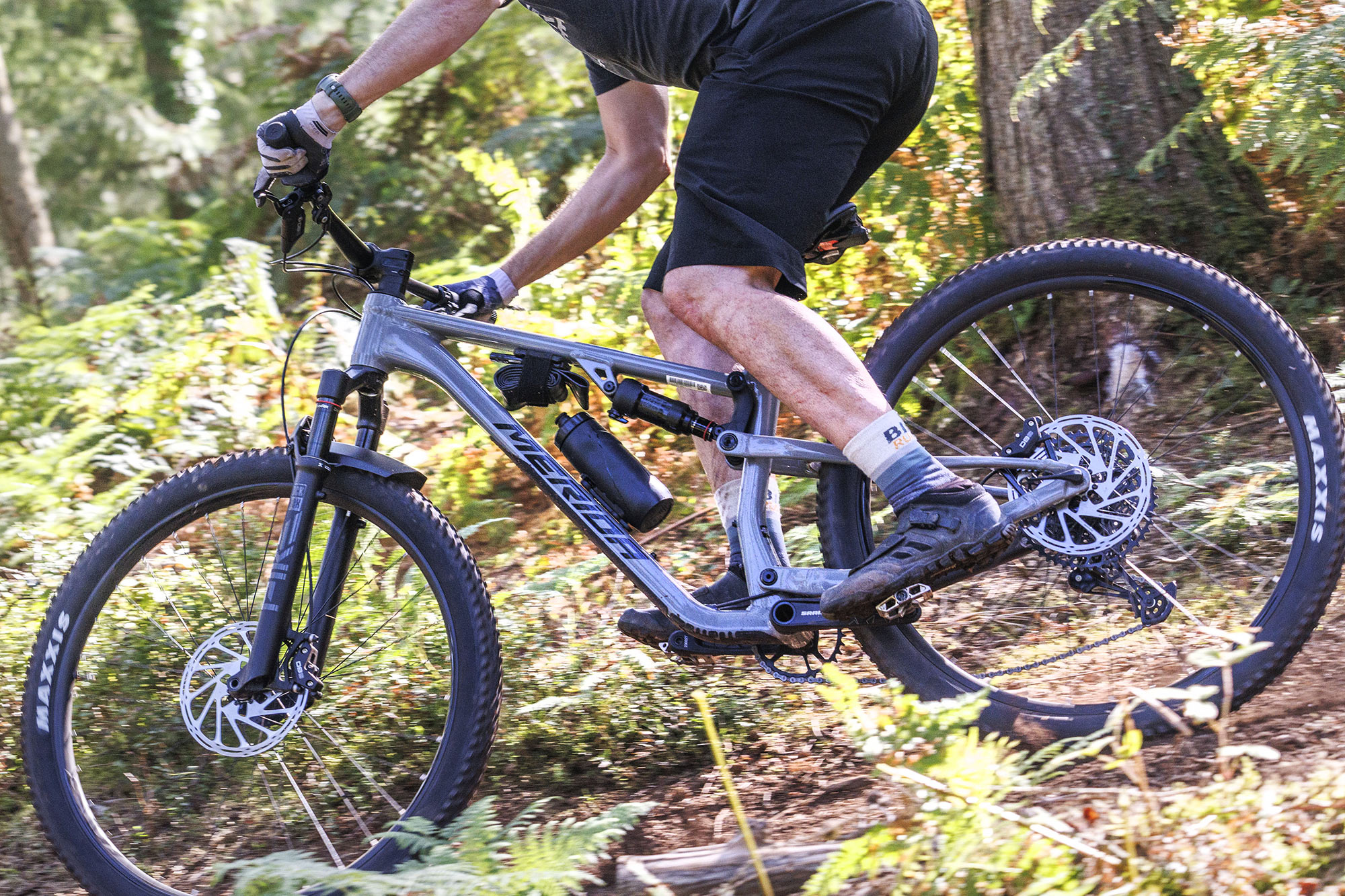Merida revamps their core One-Twenty full-suspension mountain bike with a simplified design and a bit more travel to create an even more capable all-rounder trail bike for the masses. With 130mm of travel front and rear, call it a downcountry bike if you want. Or maybe more appropriately – a short travel trail bike, Or more simply, just a mountain bike. And it’s only available in aluminum. That then, makes sure to keep the new One-Twenty affordable and accessible to anyone out hunting trail to ride.
Oh, and if you like the recent carbon Ninety-Six cross country update, but are on a budget? There’s a new Lite alloy setup for that type of marathon riding, too…
Merida One-Twenty an affordable 130mm alloy mountain bike
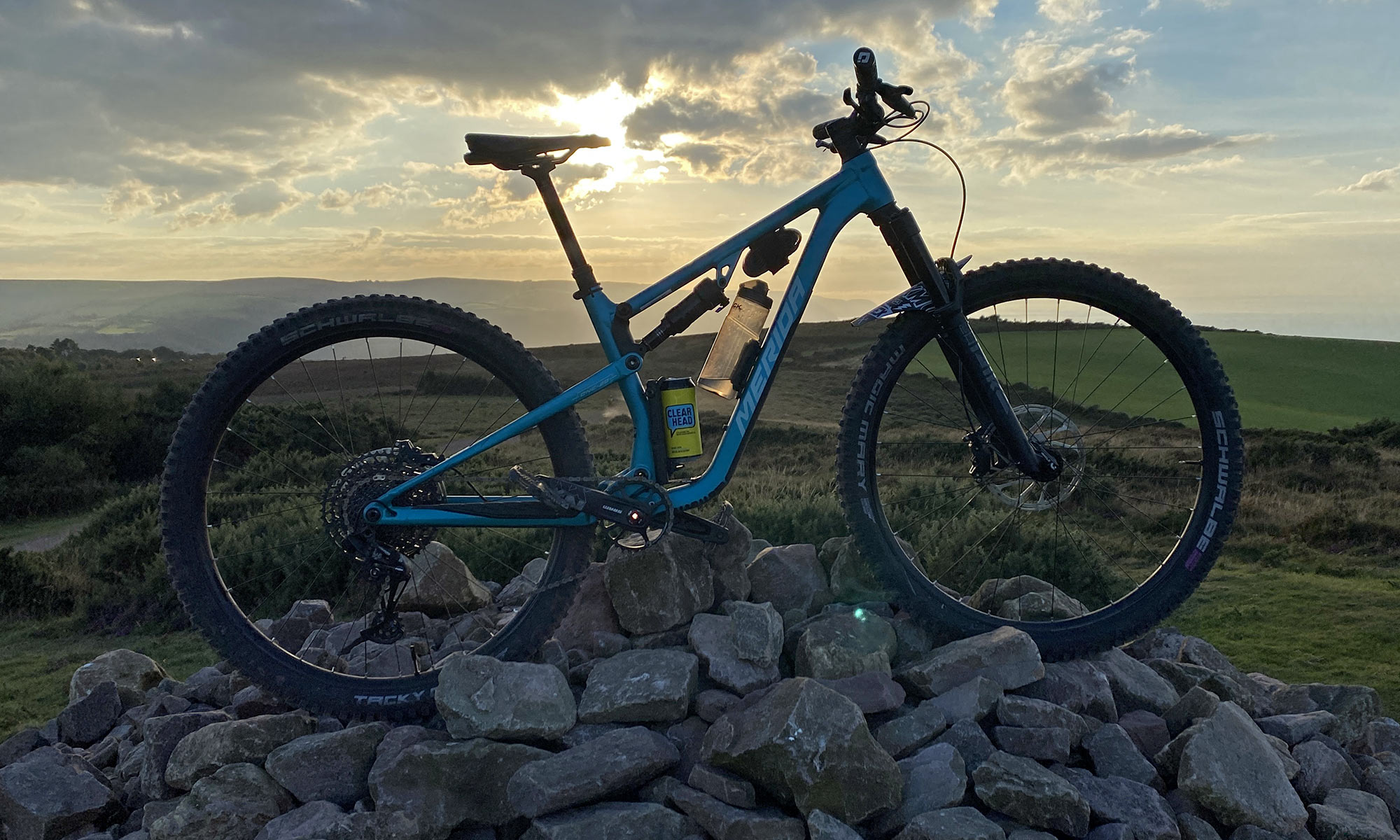
Following in the footsteps of last year’s One-Forty & One-Sixty platform, Merida revamps the One-Twenty. It gets a new simplified suspension design, an alloy-only frame, and modernized geometry.
Let’s get this out of the way quickly… The new Merida One-Twenty is a 130mm travel mountain bike. It originated at 120 in the back, 120 in the front. Then, 120 rear & 130mm up front. Now, it’s just 130mm front & rear. The bike has been around in essentially 5 generations since it debuted in 2009. And a lot has changed in almost 15 years – from 26″ wheels and 3x drivetrains to this modern 1x-specific 29er.
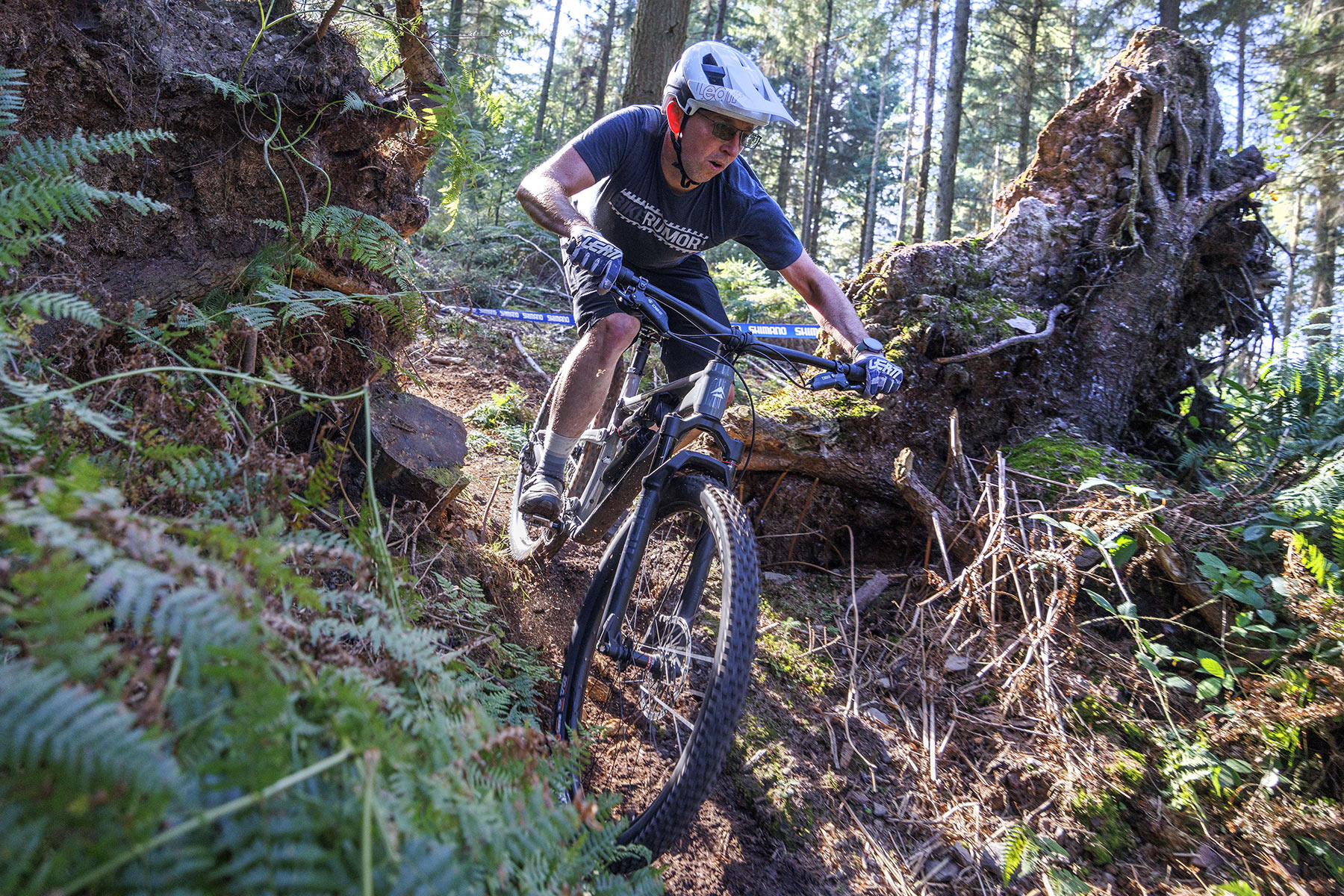
But it’s still a mid-travel mountain bike.
And it’s still meant to be ridden on pretty much any trails you want. Pedal uphill like a short-travel bike, bomb down almost like a long-travel gravity bike. It continues to evolve, yet it’s still just a mountain bike. So, Merida has kept the One-Twenty name. Argue with them, not me.
What’s new?
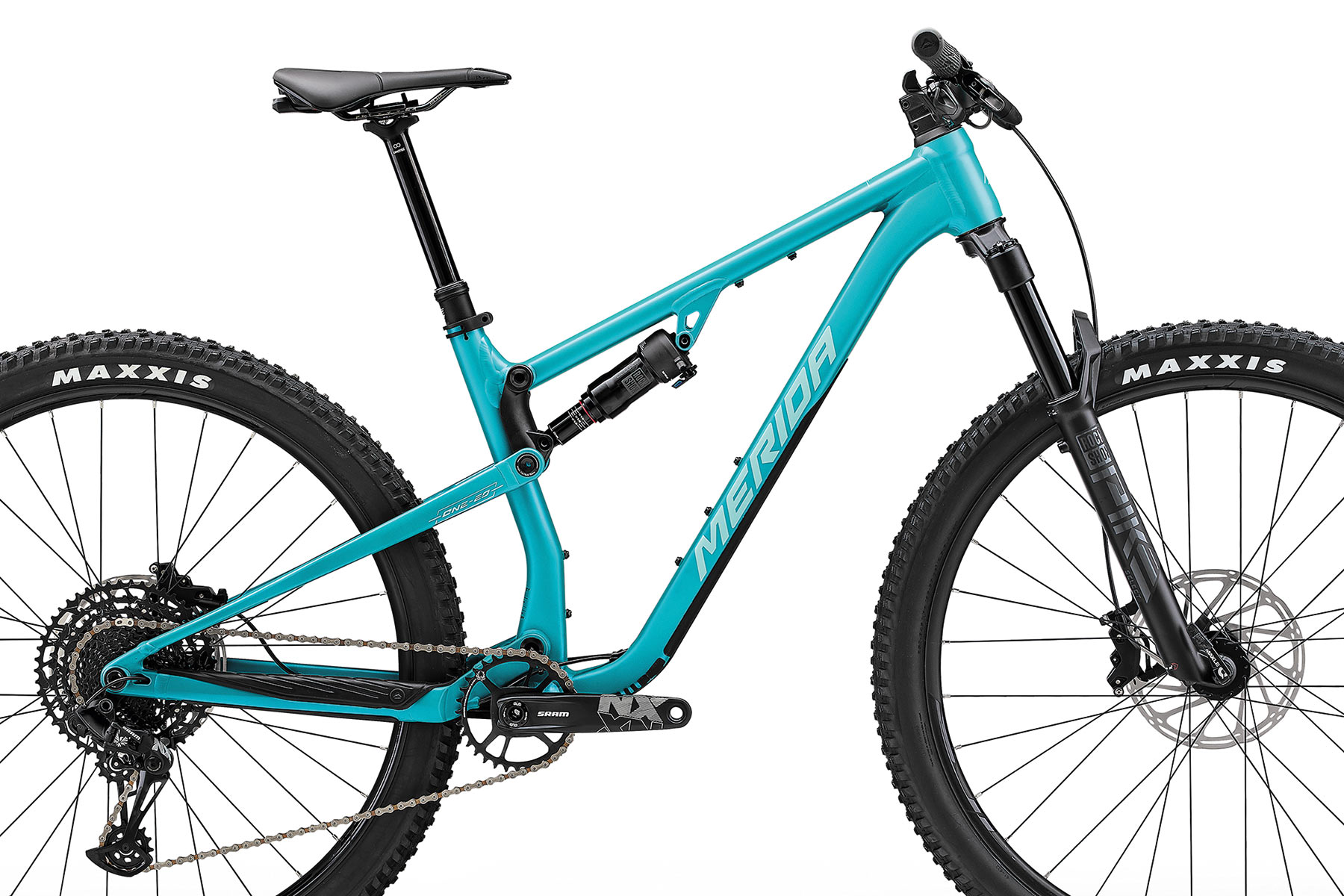
Merida envisions the One-Twenty as the kind of versatile bike that’s well-suited for everything from a rider’s first entry in discovering singletrack riding to all-day backcountry trail riding for more experienced mountain bikers. So, this new update focuses on a few key points: simplicity, affordability & modern trail capability.
Keep it simple (stupid)
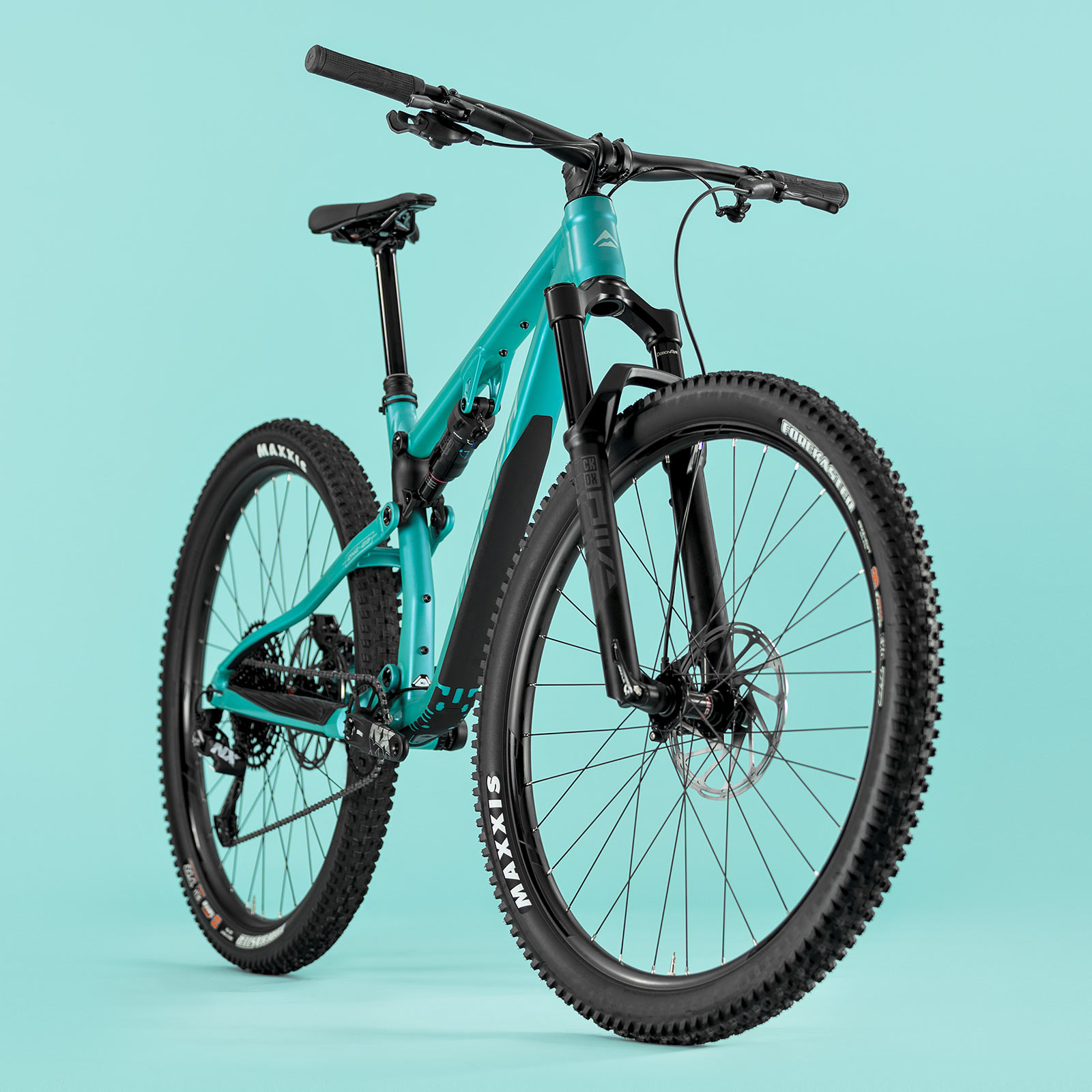
Keeping this simple means making the bike easy to setup and last a long time. To that goal, Merida shifted to the same simplified single pivot design as the 140/160 & 96. That uses flex in the P-Flex aluminum seatstays to eliminate the need for a pivot near the axle. And it upgrades to larger main pivot bearings. They also rearranged the short linkage-driven shock layout. It is now reconfigured under the toptube to make more space for two regular water bottles, plus a mount for a spare tube & tools.
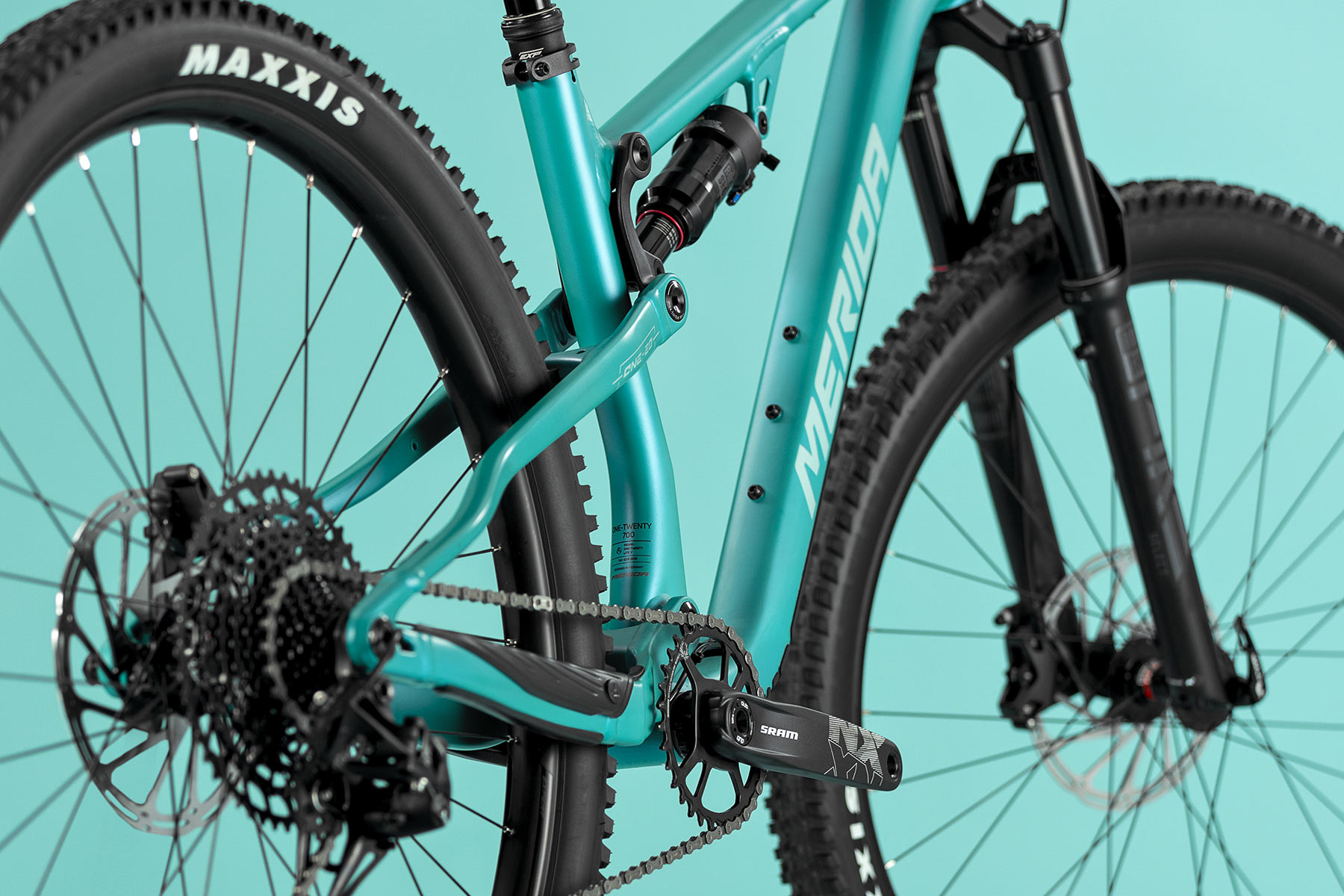
The new design with the seatstays effectively acting as springs, means a more progressive suspension leverage ratio. That necessitates a custom tune for the air shocks. But it also means greater support at the end of the travel, letting you send it on this relatively short-travel bike.
All-in, it’s now also Category 4 tested for use up to enduro racing, with a lifetime original owner frame warranty.
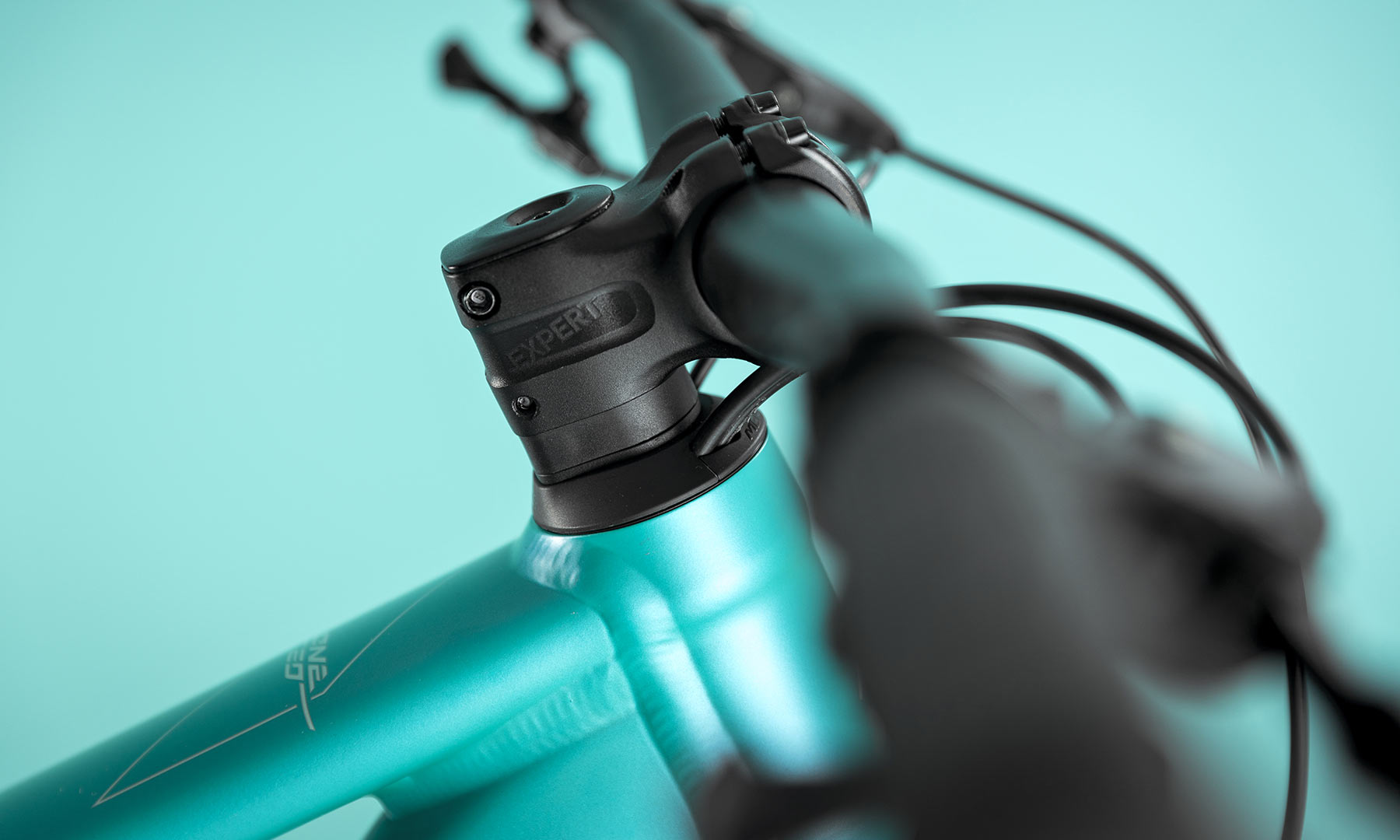
Old school internal cable routing ports also disappear, going for internal cable routing through the oversized 1.5″ Acros headset. The new routing also has foam sleeves for rattle-free riding. And it adds a service port at the BB for easy cable replacement.
Make it affordable in aluminum
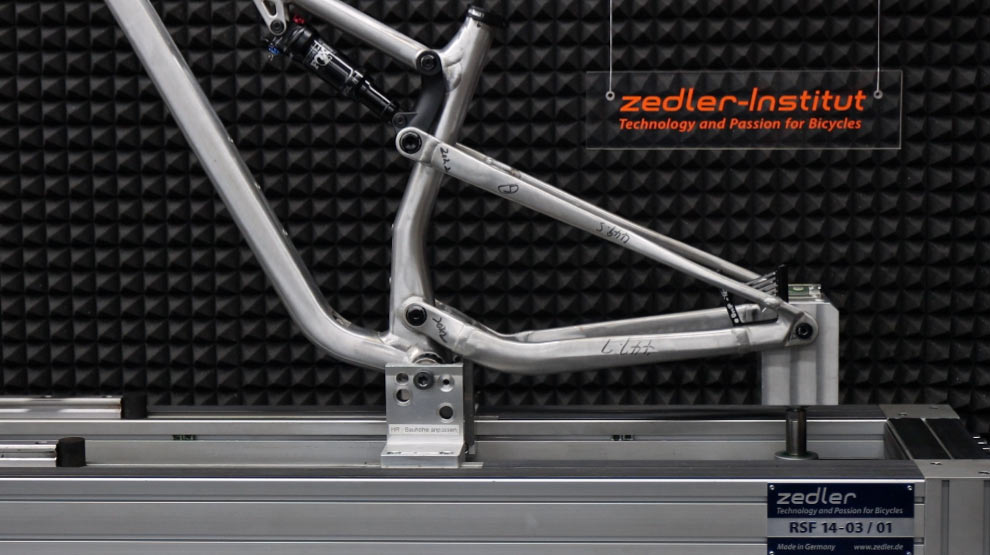
Maintaining affordability essentially comes down to sticking only with an aluminum frame. The new 5th generation One-Twenty uses a LITE alloy frame made of triple-butted Prolite 66 hydroformed aluminum tubing, with big chunky smooth welds. Five years of commercial inflation means that the top-spec bike is more expensive than the old top alloy bike. But Merida still managed to build up a new entry-level complete trail bike cheaper than they did back in 2019.
How much does it weigh, though?
The new claimed frame weight is 3100g without shock, down just 20g from the previous shorter-travel iteration (or up 80g depending on how they compare it). It’s also more than 500g lighter than the recent alloy One-Forty frame. The top-tier alloy Merida One-Twenty 700 that I tested weighed 15kg, just 100g more than a similarly spec’d One Twenty 800 from the previous generation.
Shred harder with more travel & modern geometry
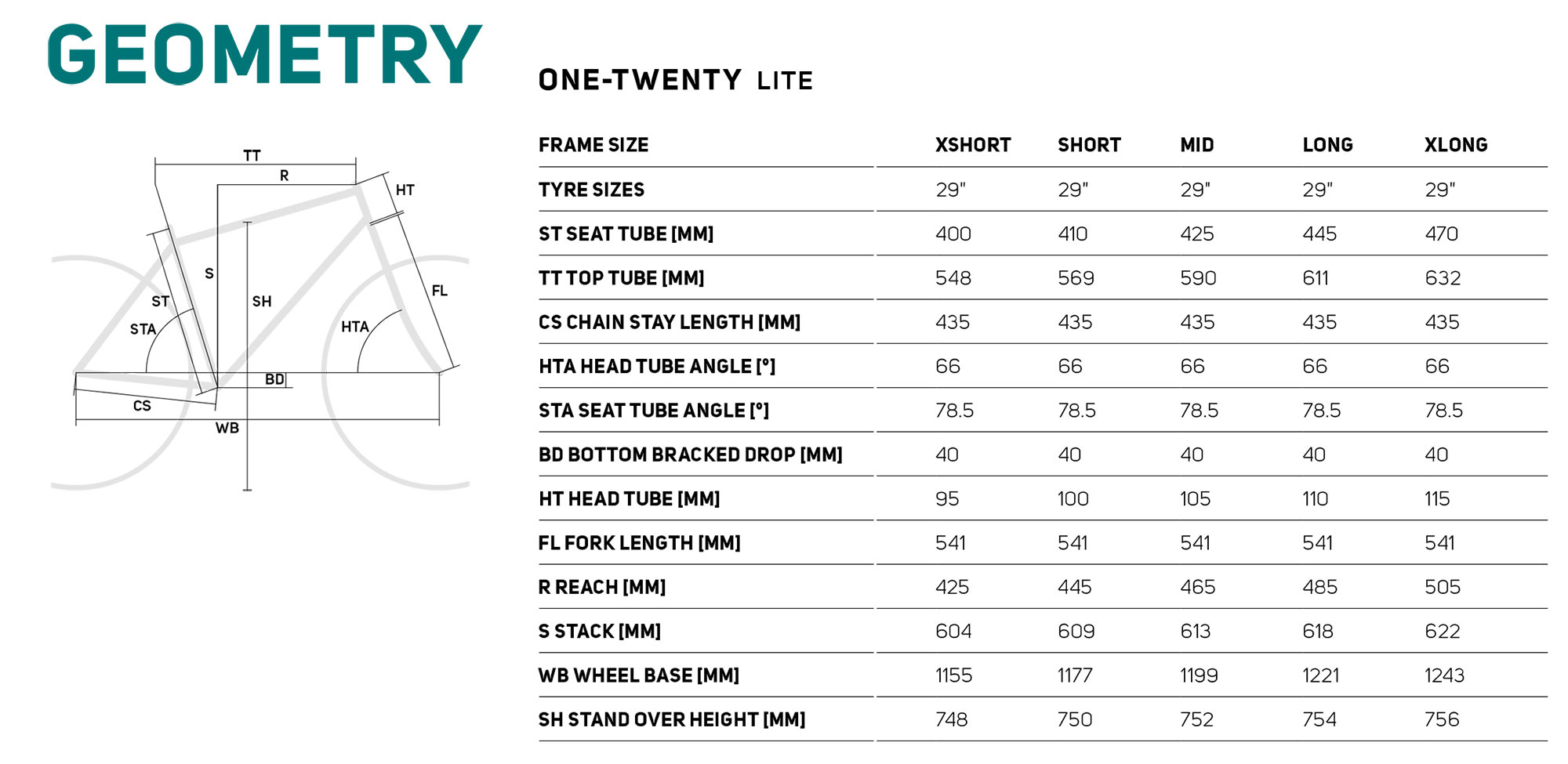
As for extra capability, the bump up to 130mm of rear wheel travel certainly helps to some degree. An extra 10mm of travel can do wonders for making a bike’s ride plush, while still having something in reserve for bigger bumps. But it’s really the more modern longer, lower, slacker enduro-inspired geometry that makes the biggest difference. Now with a slacker 66° headtube, a steep 78.5° seattube, the same 435mm chainstays, and 1-3cm longer Reach – the bike climbs & descends faster.

It also puts it right smack dab in between the Ninety-Six & One-Forty on Stack, Reach, and angles.
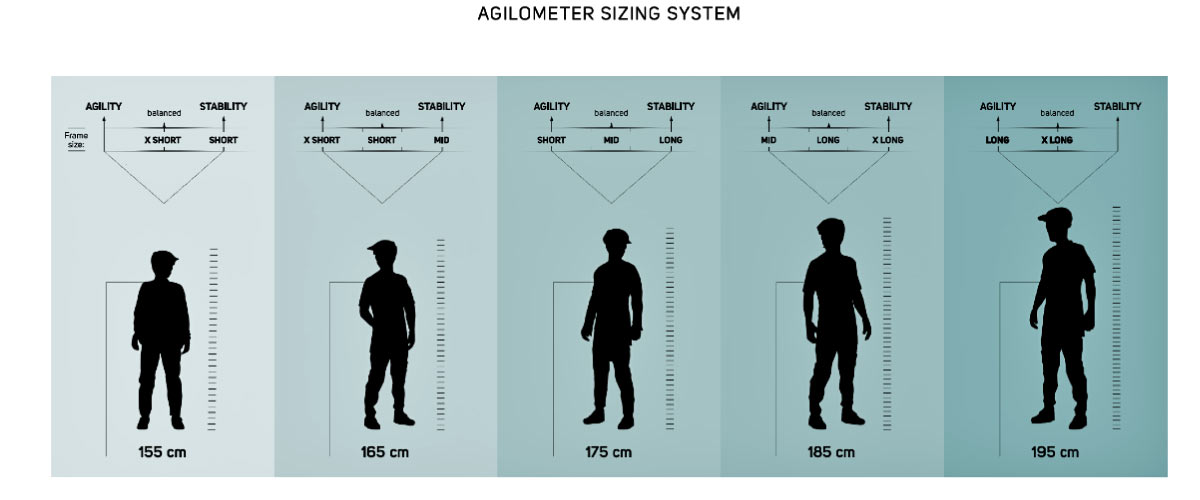
Plus, like the 140/160, the new 120 shifts to Merida Agilometer sizing that adds a 5th framesize, and relabels them. From XShort to Mid to XLong, standover heights are generally reduced with longer travel droppers. That then, lets most riders pick from 2 or 3 different frame sizes. Get the Reach that they prefer, without worrying over conventional sizing.
Go shorter for a more playful ride, or longer for extra stability at speed.
Tech details
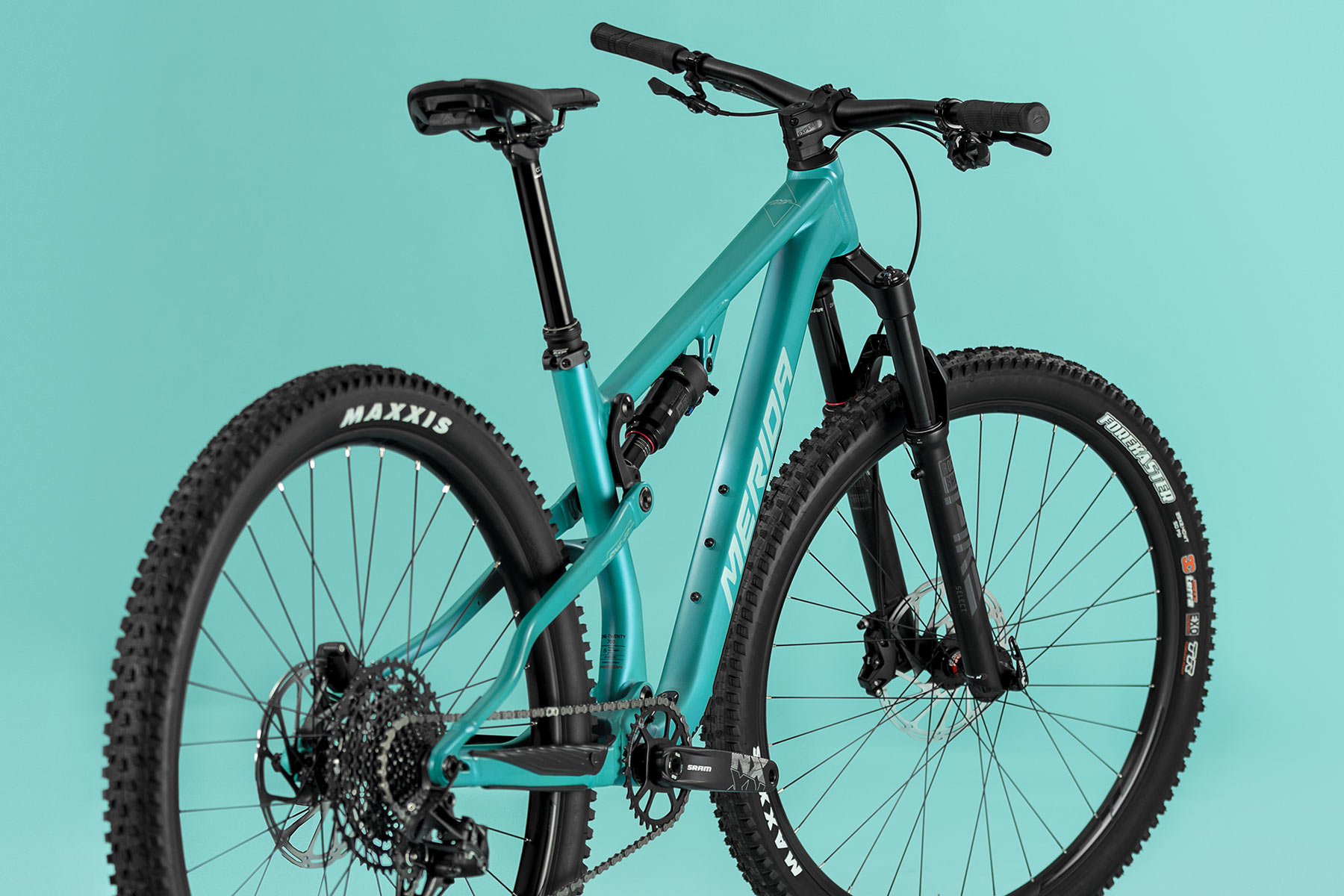
Beyond the new aluminum frame design and its performance improvements, Merida also sticks with solid proven standards. The new One-Twenty features a Boost thru-axles with a SRAM UDH for future-proof derailleur or ‘transmission’ drivetrain setups. It also keeps a threaded BSA bottom bracket, with an optional set of bolt-on ISCG05 tabs if you feel the need for a chainguide.
It features long 34.9mm dropper posts for reliability (150mm for XS & S, 170mm for M, and 200mm for L & XL). And it gets ribbed chainstay & inner seatstay protectors, plus a long downtube protector to keep the bike quiet and looking good.
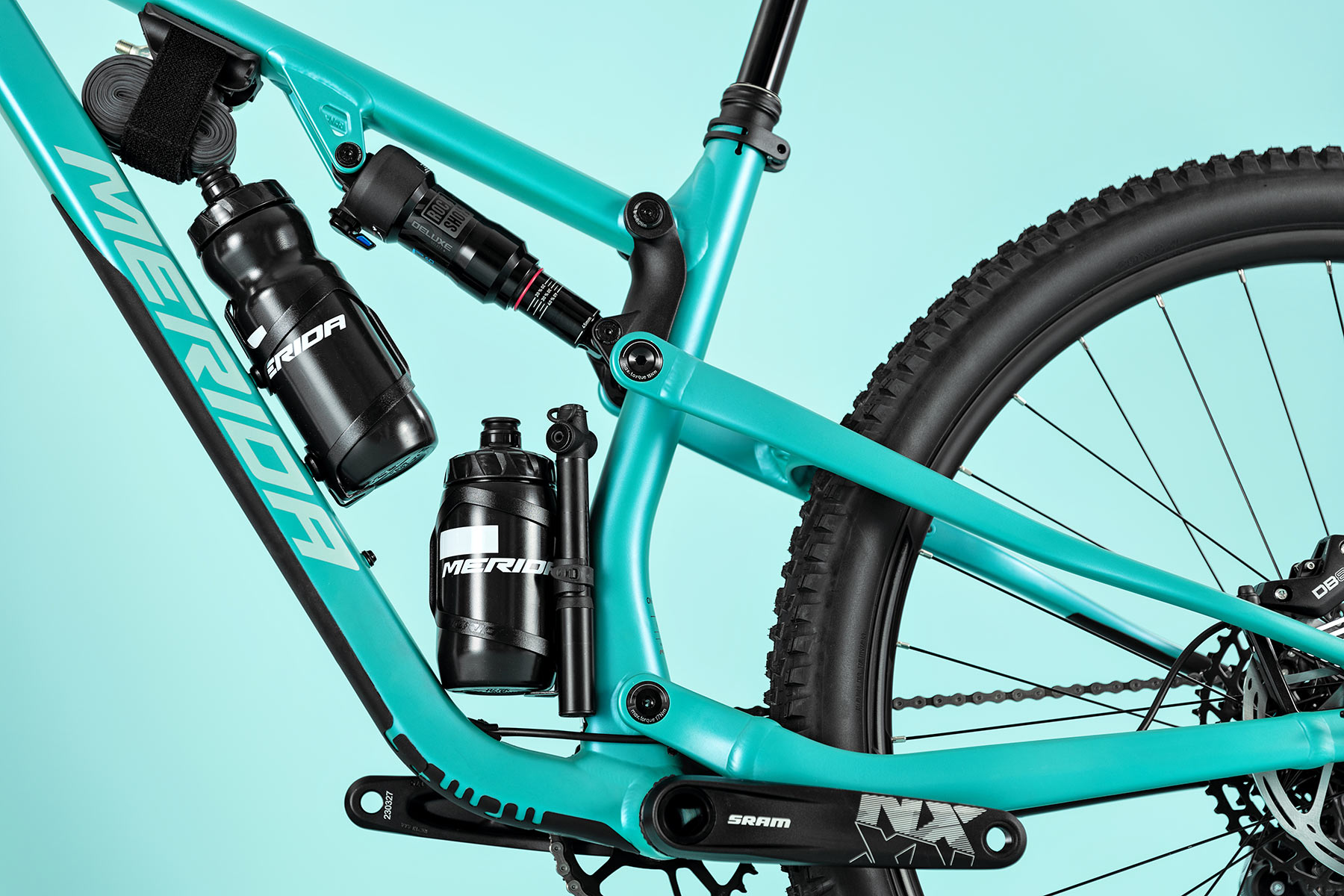
The bike has room for 2 water bottles across all sizes – 0.5L on the seattube & 0.5-0.75L on the downtube depending on size. Plus, there’s another 2-bolt mount under the toptube to mount another accessory like a strap mount or tool bag.
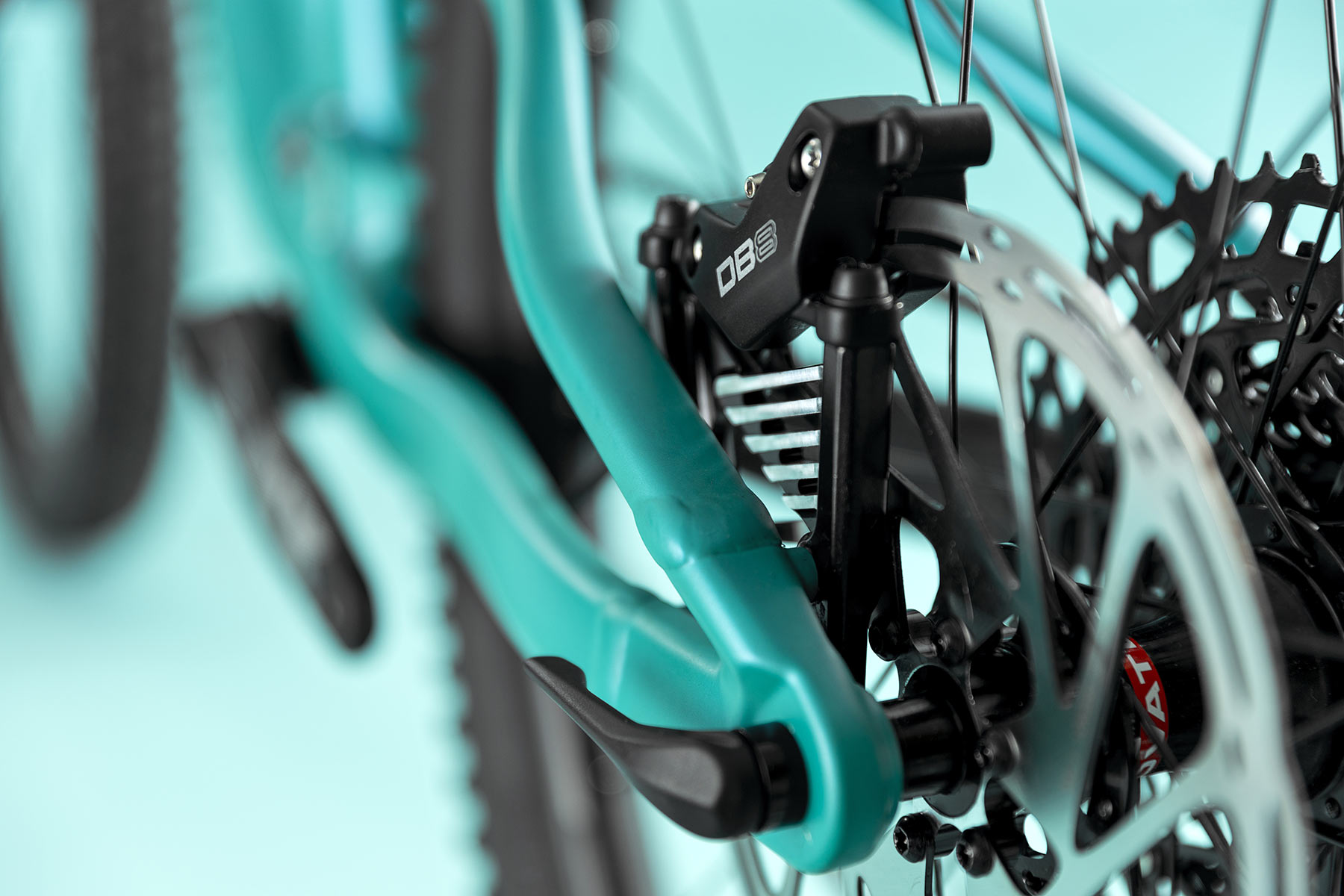
It also builds brake cooling fins into the post mount rear disc tabs that separate braking from seatstay flex. There’s also an optional long bolt-on rear fender (shared with the 160) to keep muck away from your pivots if you ride a lot on muddy trails.
2024 Merida One-Twenty – Pricing, Options & Availability
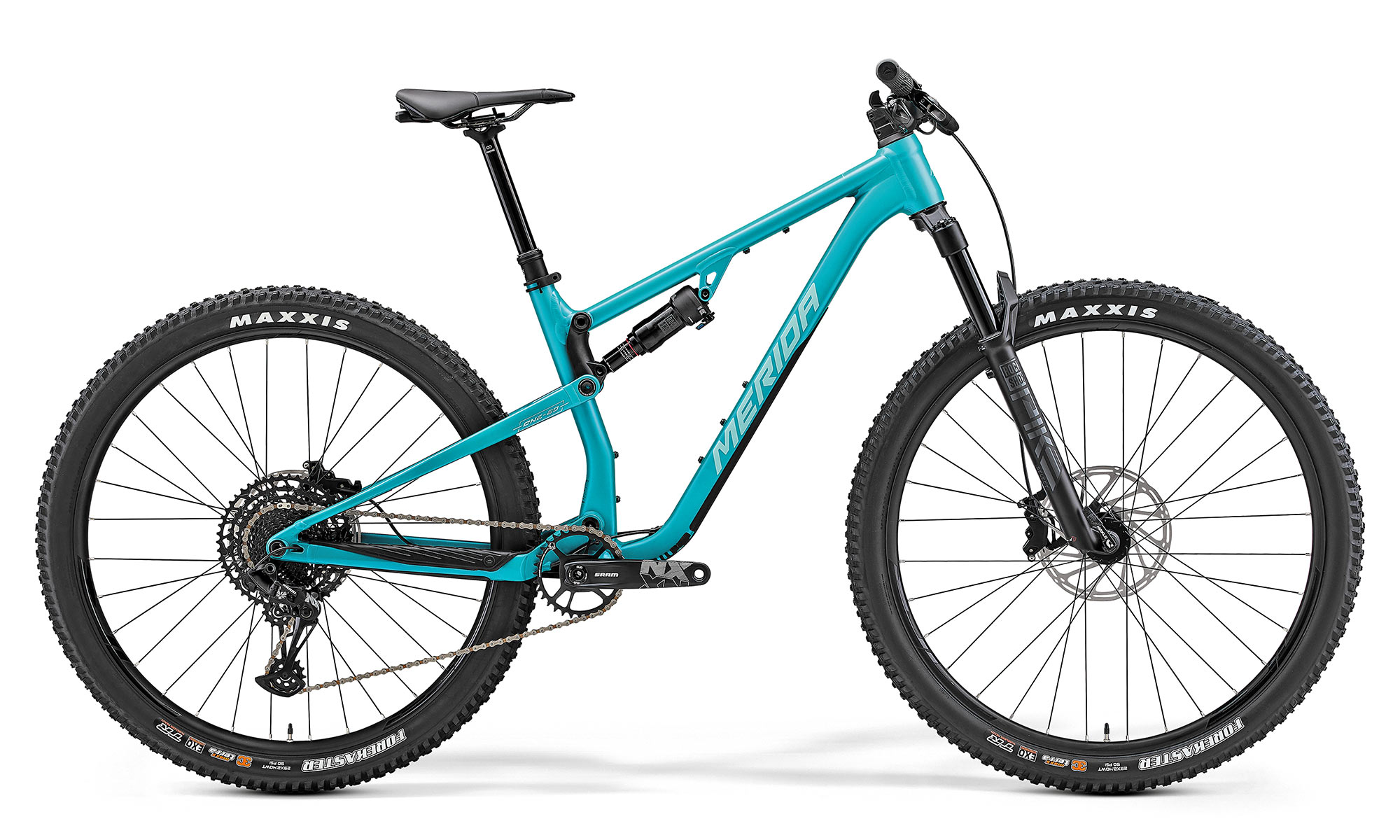
The new 2024 Merida One-Twenty comes in three specs, each with a colorful frame option or the gray version like my test bike.
The top spec is a £3100 / 3720€ One-Twenty 700 with a mechanical SRAM NX Eagle drivetrain, DB8 4-piston brakes, RockShox Pike Select/Deluxe Select+ suspension, and house brand 29mm internal alloy wheels with 2.4″ Maxxis Forekaster tires (tubeless-ready, but without tubeless tape, valves, or sealant.)
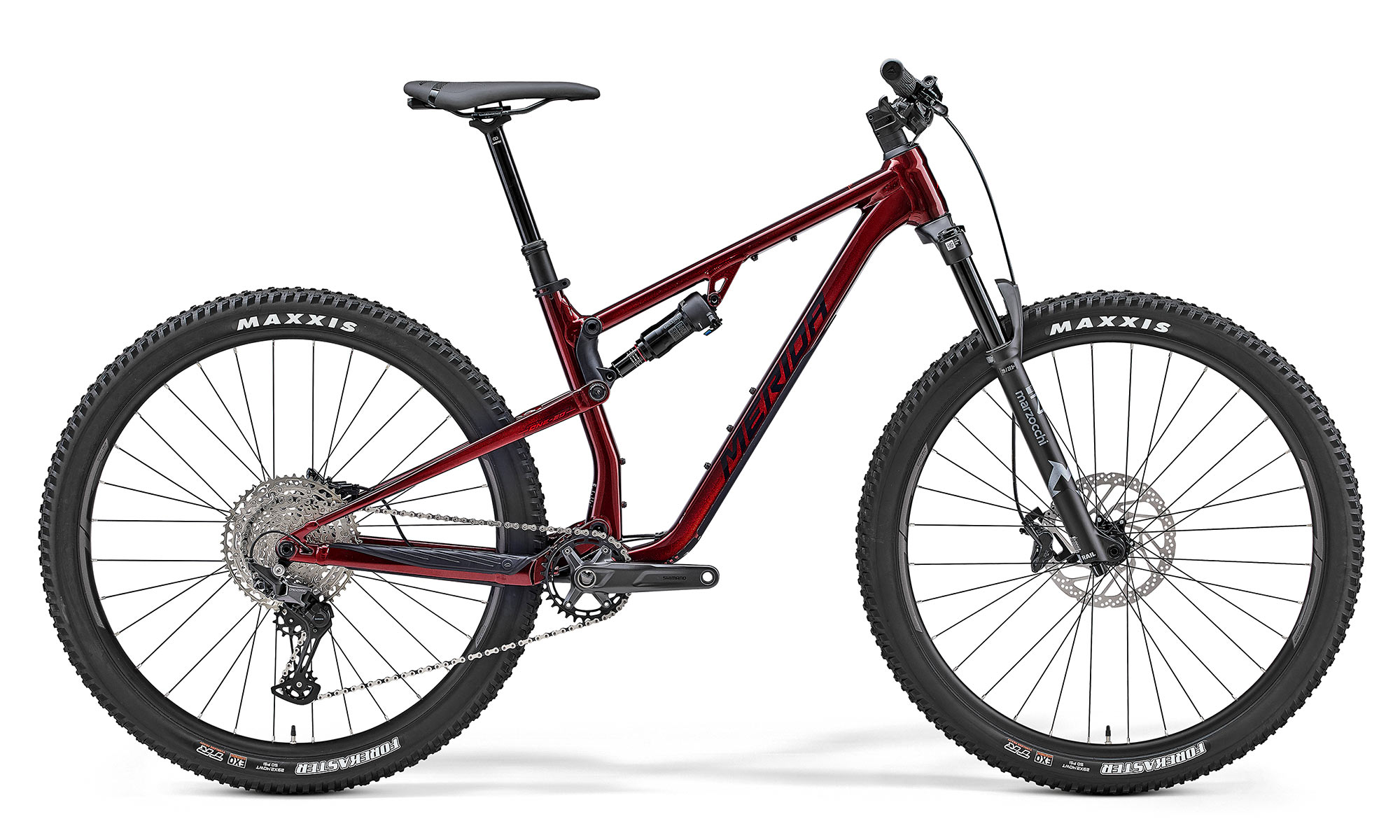
Then a £2500 / 3000€ One-Twenty 600 opts for a Deore 1×12 group, Deore 4/2-piston brake combo, a Marzocchi Z2 fork paired to the same RockShox Deluxe Select+ shock, and the same wheel/tire combo.
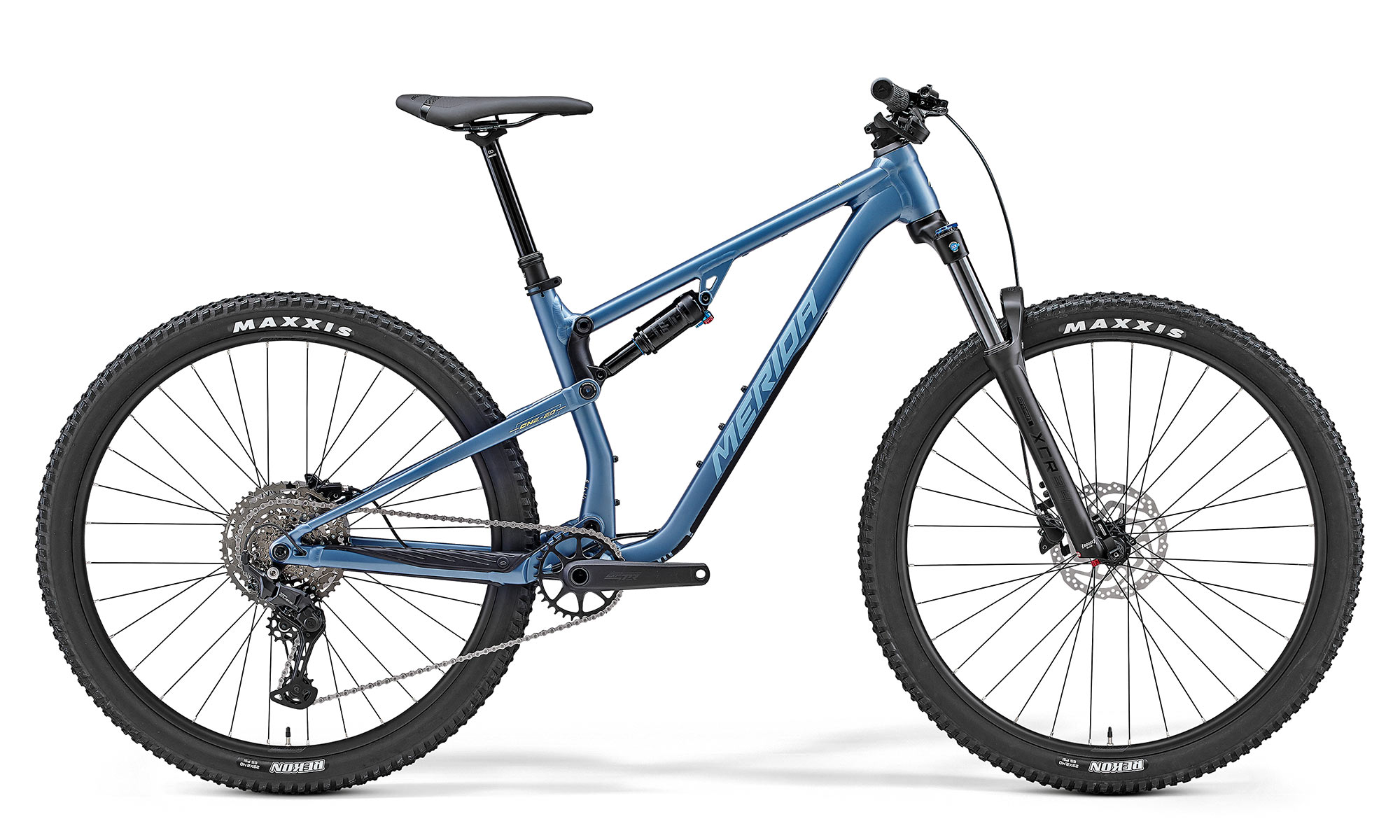
And lastly, an entry-level One-Twenty 300 is Merida’s most affordable trail bike in years at £1900 / 2280€, with a Shimano Cues LinkGlide 1×10 drivetrain, Shimano 2-piston brakes, SR Suntour 2CR XCR34 fork & Edge Plus shock, and 25mm internal tubeless-ready wheels with 2.4″ Rekon wire bead tires.
All of the new One-Twenties are making their way around the globe now on their way to Merida dealer bike shops. They should be available everywhere in October.
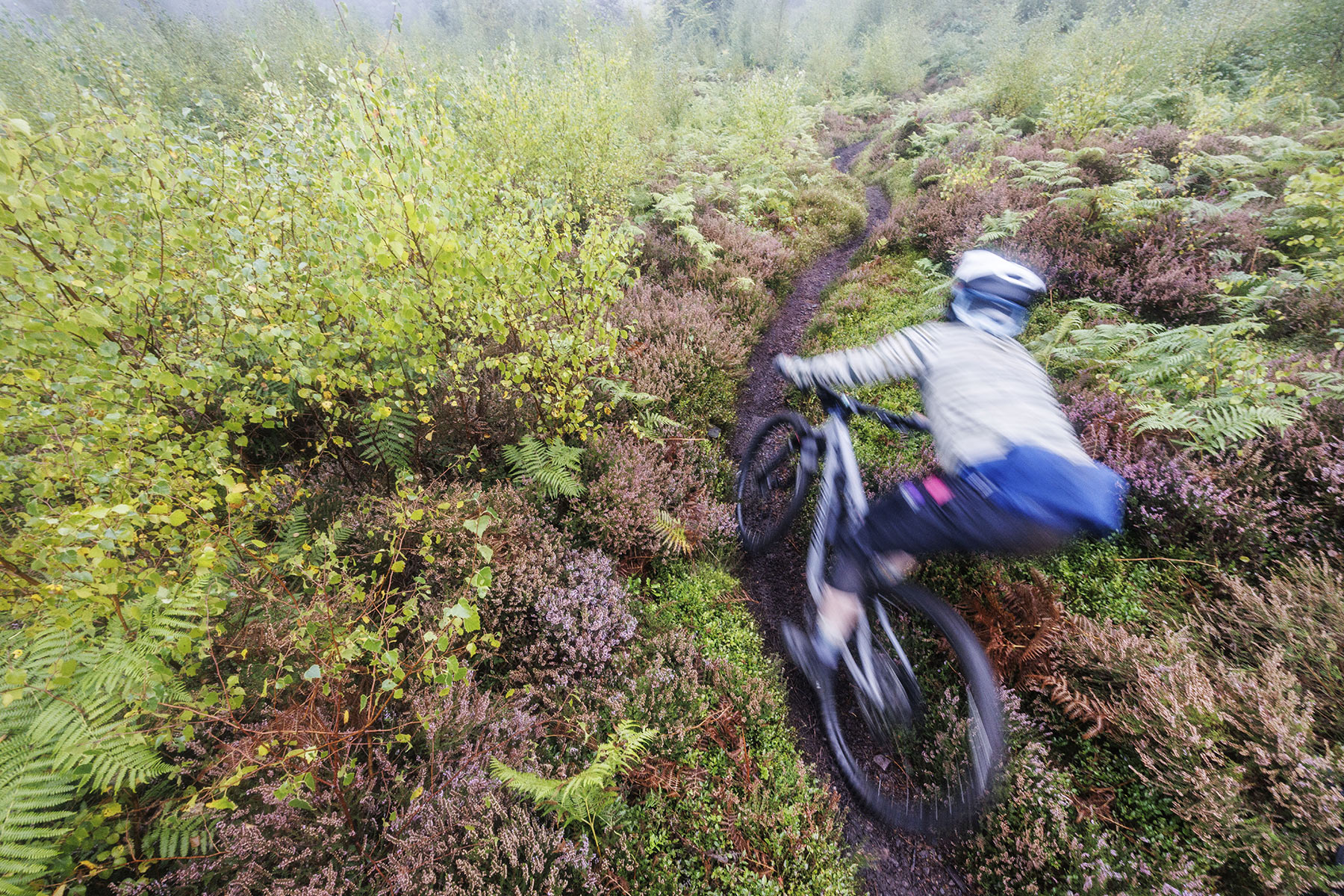
But, how does the new bike ride? Check out our First Rides Review soon from thrashing the new One-Twenty through The Ex Enduro to see how it fared. And how beat up I was after 5 intense days of technical UK riding!
But what about the alloy Merida Ninety-Six Lite?

Eagle-eyed mountain bikers may notice that this 130mm alloy trail bike’s design looks a lot like the 100mm travel Ninety-Six XC bike from a couple of years ago. And that Ninety-Six is still only available in a carbon frame option – either in XC or light trail builds.
So to make a Ninety-Six on a budget, Merida realized they could scale down the new aluminum One-Twenty by simply giving it a shorter travel fork and a shorter stroke shock. It’s the same triple-butted alloy Lite frame as for the One-Twenty. Only now it’s reduced travel to 110mm front & rear, which puts it in between the racy RC and downcountry trail builds of the carbon cross-country bike.
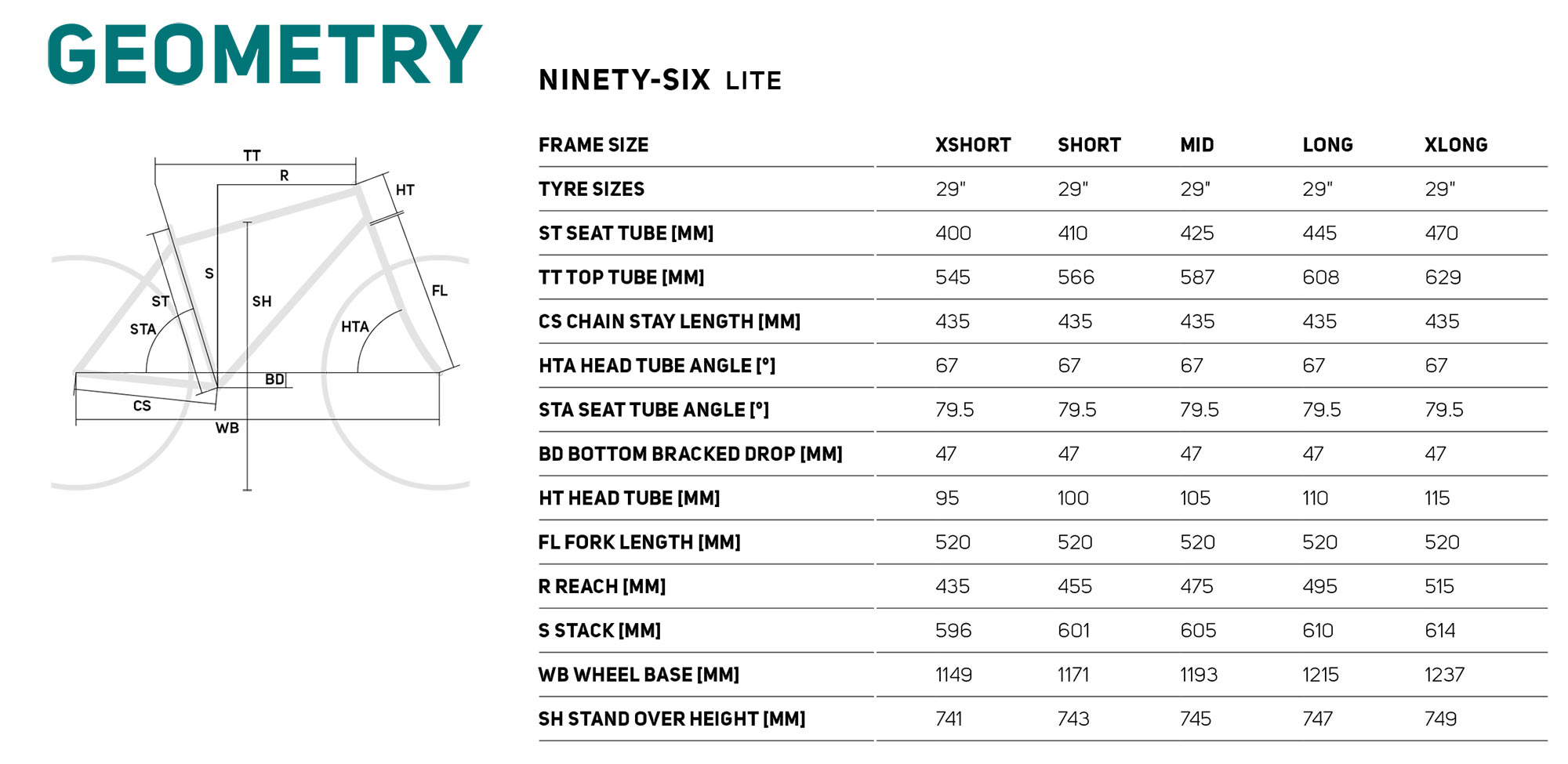
Geometry-wise you get a one degree steeper setup with 67° head angle, ultra steep 79.5° seat angle (maybe slide the saddle back a bit on the rails), and the same 435mm rear end. Leaning the bike forward a bit does lower the BB by 7mm, and extend frame Reach by 10mm & lower Stack by 8mm across all sizes.
Build-wise, the Ninety-Six Lite gets a lighter setup. That means a lighter 34mm stanchion forks and 31.8 cockpit for the 96 vs. the 35 & 35 on 120. It also means faster-rolling Rekon Race tires vs. the Forekasters, and 2-piston brakes on all models.
The end goal of the new Ninety-Six Lite is an affordable marathon cross-country bike. Compare that vs. the trail focus of the One-Twenty Lite.
2024 Merida Ninety-Six Lite – Pricing, Options & Availability
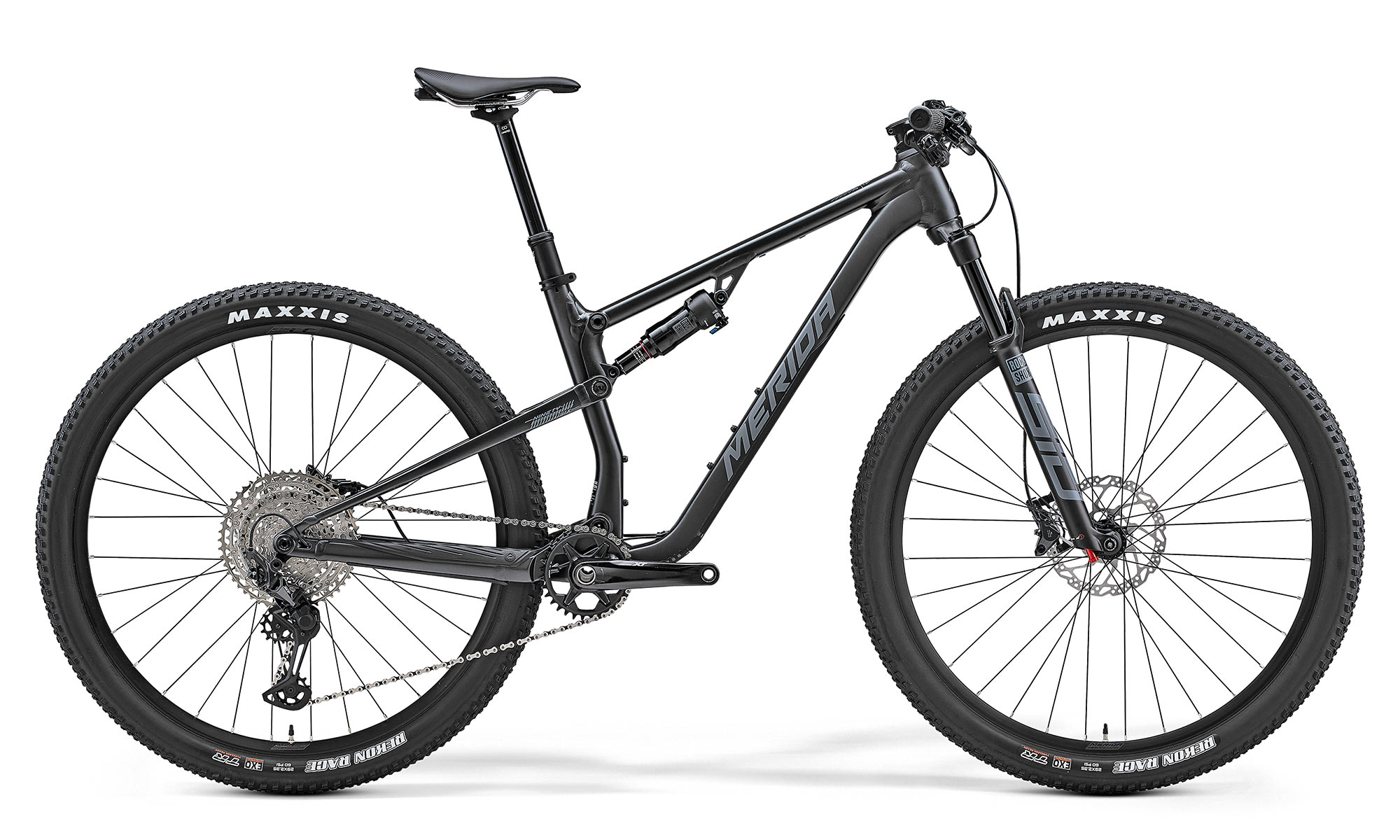
Two alloy Merida Ninety-Six Lite models enter the 2024 lineup, each in color or black. The top-tier is the still reasonable £2900 / 3500€ Ninety-Six XT-edition, with you guessed it… a Shimano XT 1×12 build with RockShox SID SL/Deluxe Select+ suspension and 25mm internal alloy wheels.
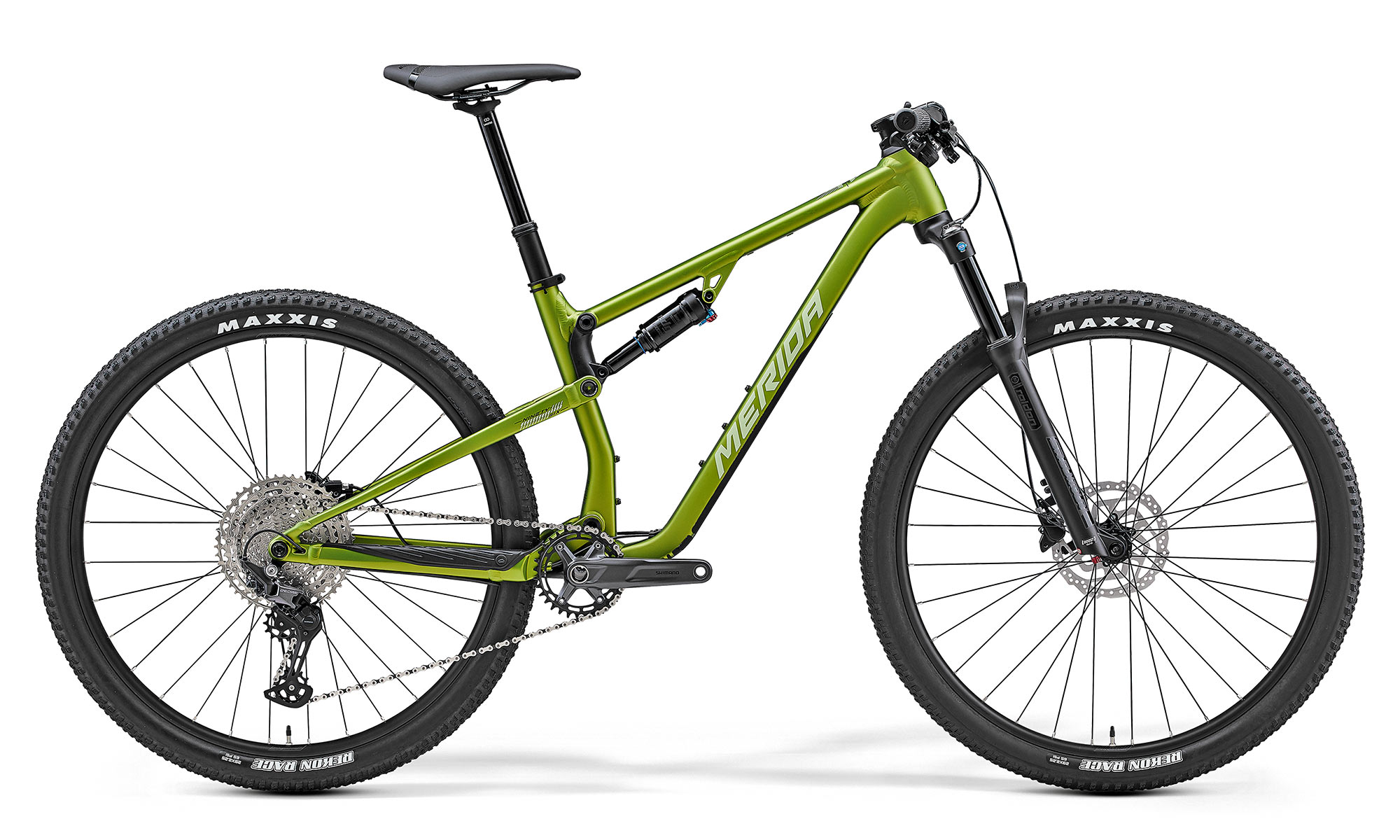
Or pick the even more affordable Ninety-Six 400 for just £2100 / 2500€. That gets a Deore 1×12 build and SR Suntour Raidon 34 R/Edge Plus suspension.
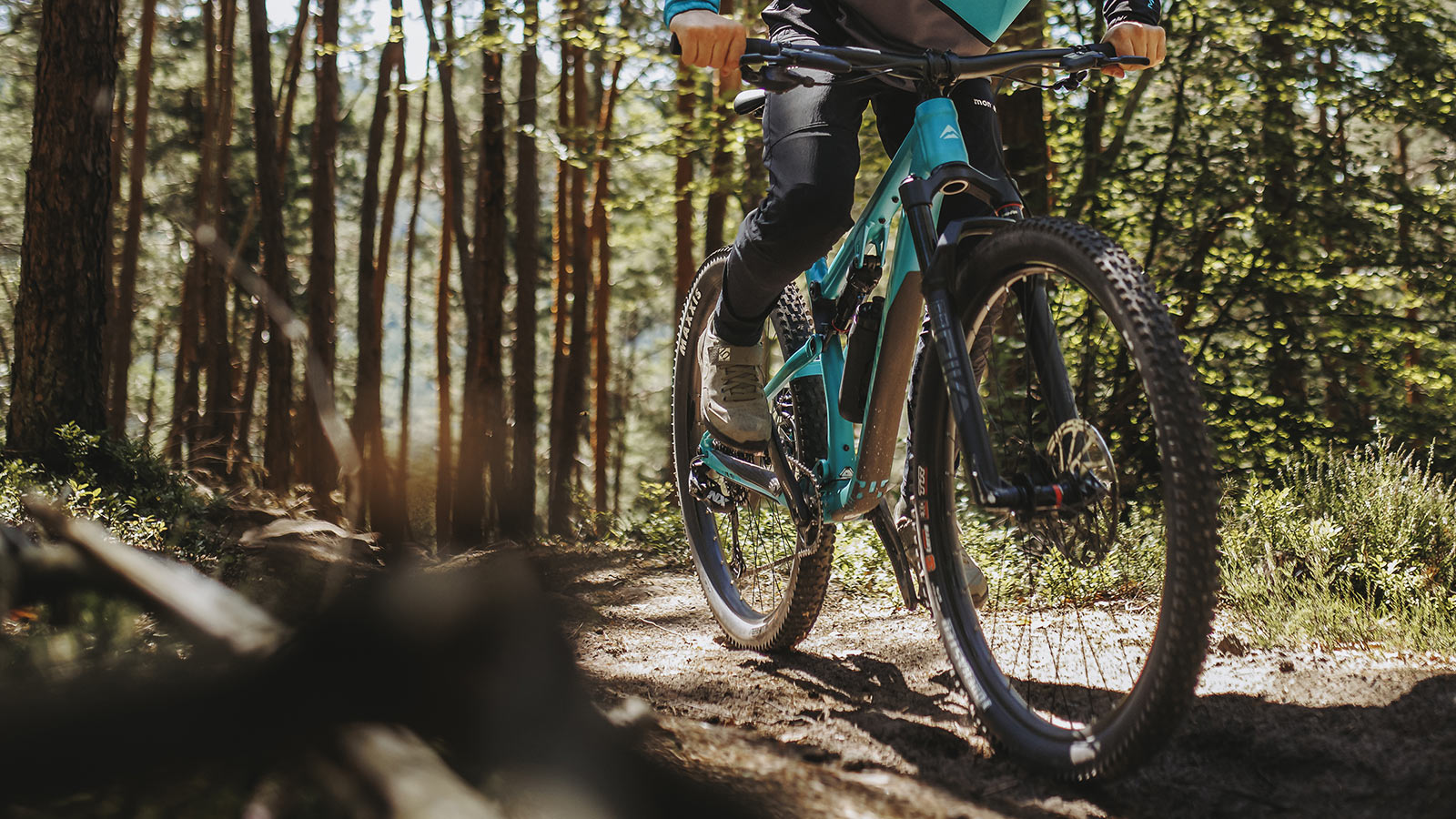
Just like the recent One-Sixty FR, all of the new 2024 Ninety-Six Lites and One-Twenties will be arriving within weeks at Merida dealers around the world.
